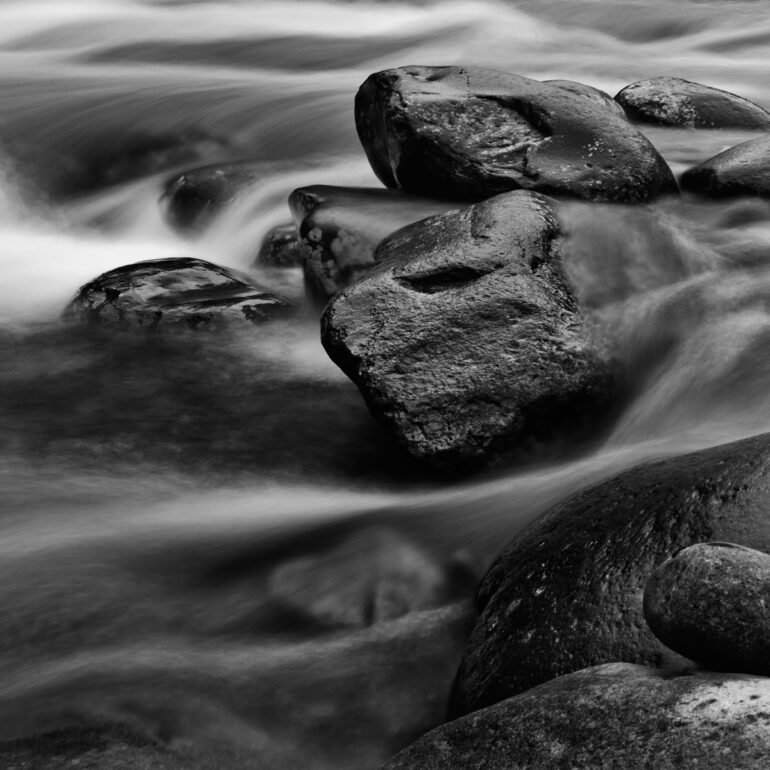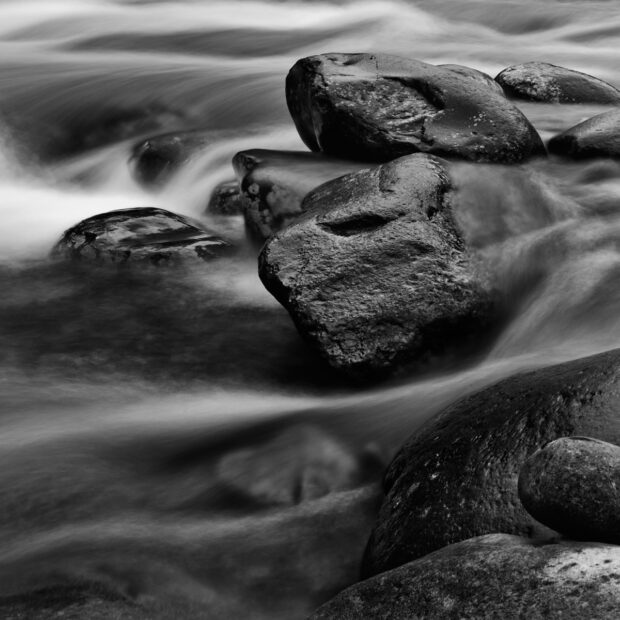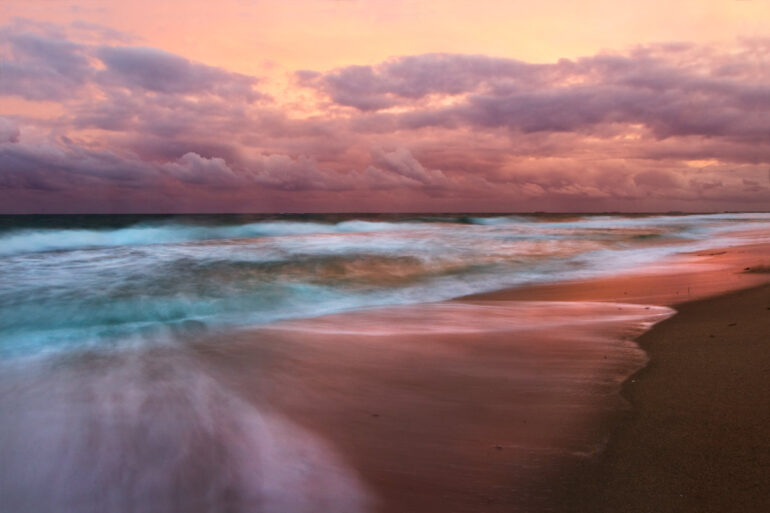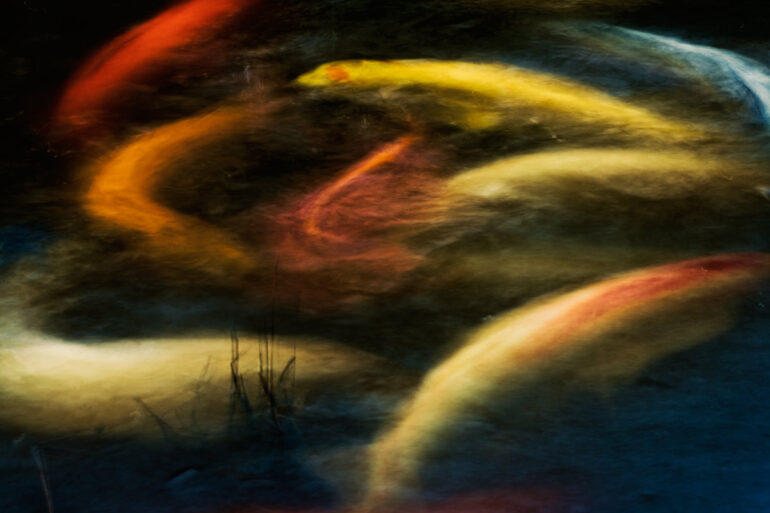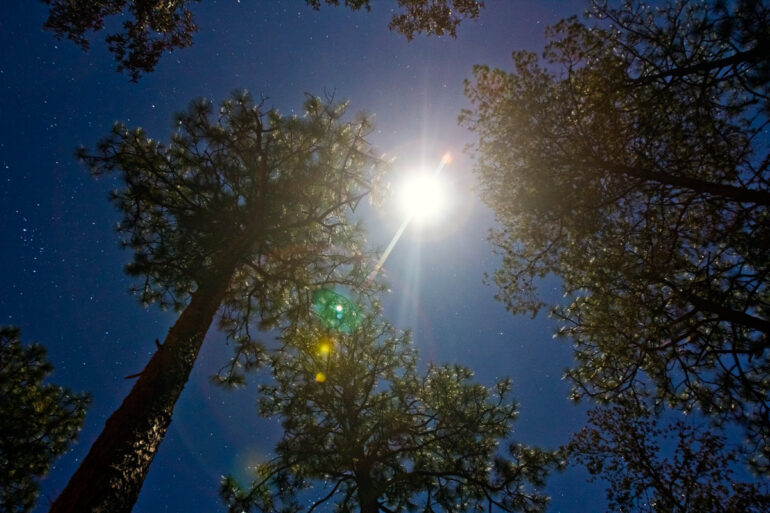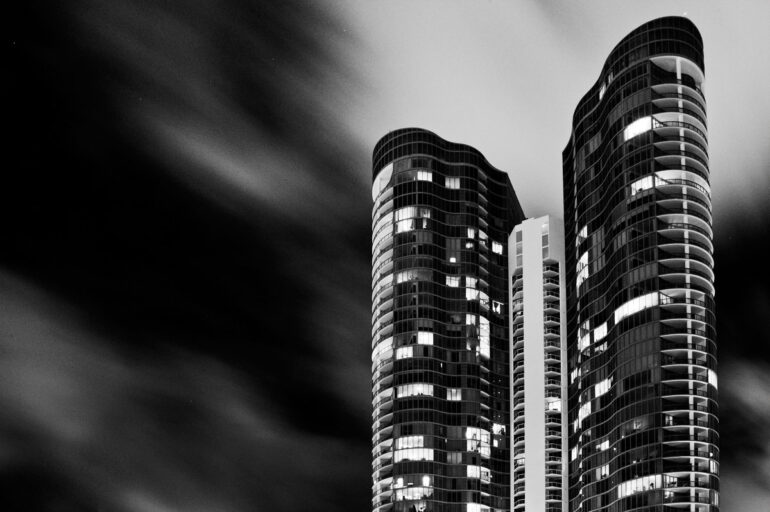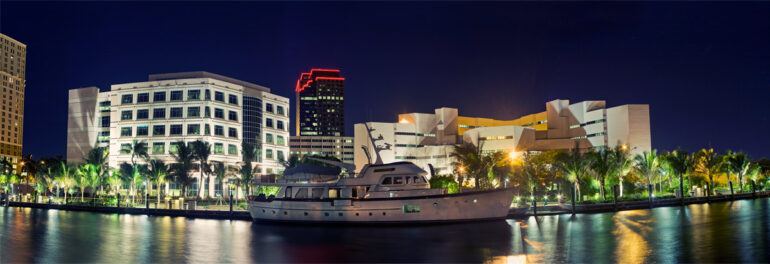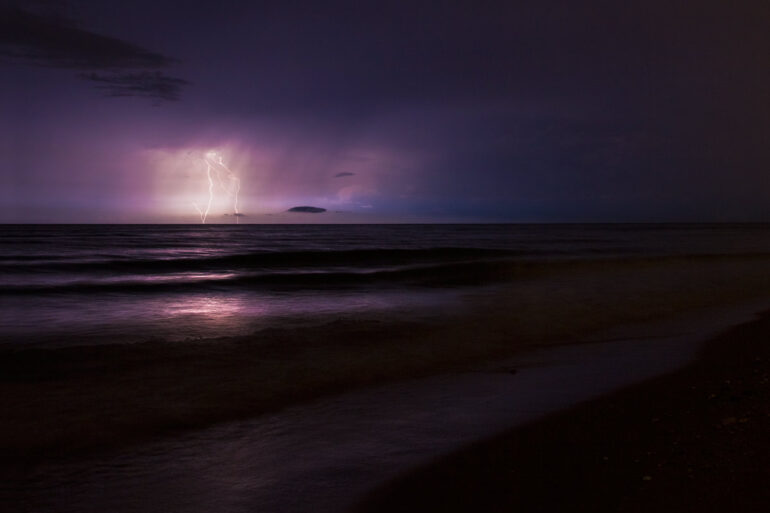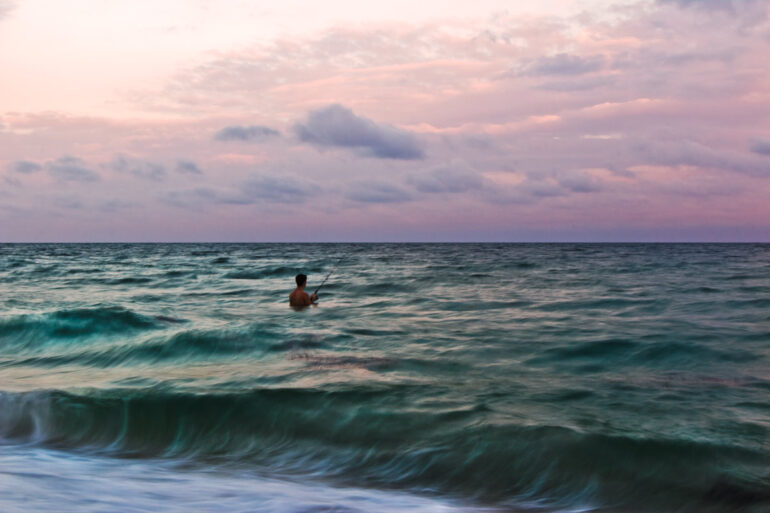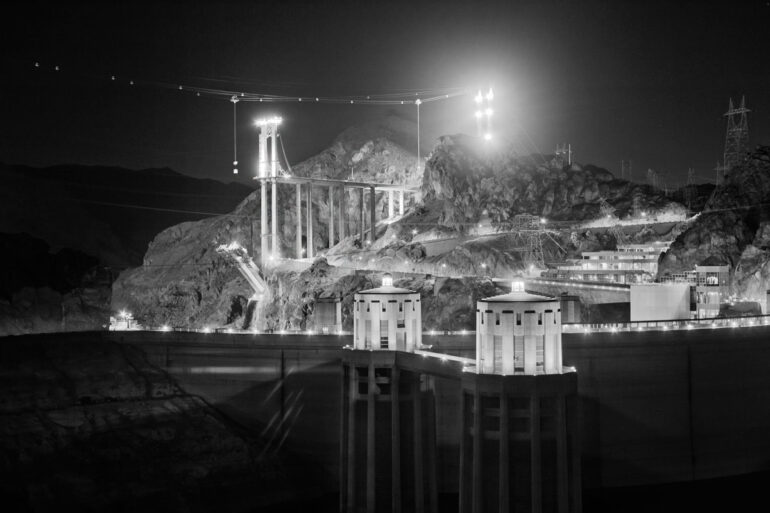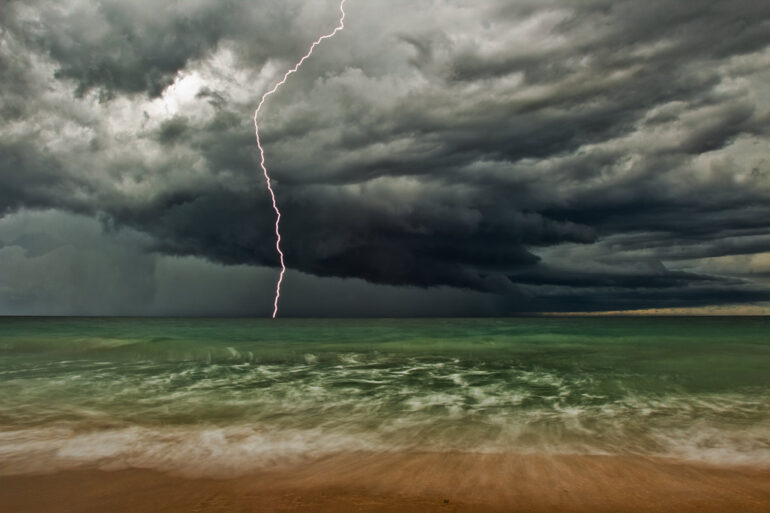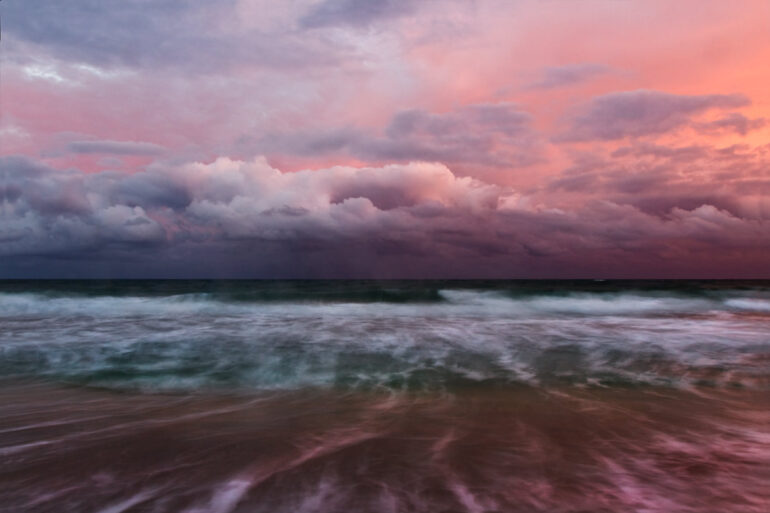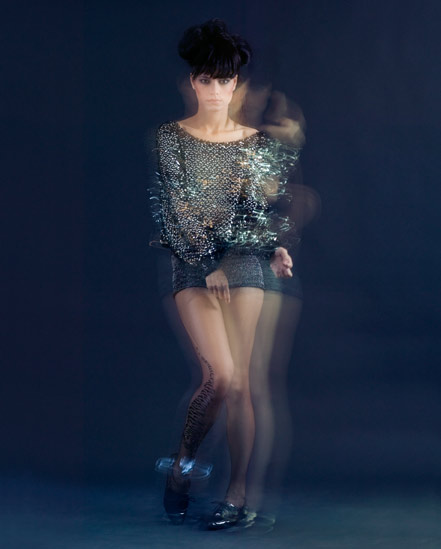We may earn a commission when you purchase through affiliate links. Learn more.
Long exposure photography opens up an entirely new world of creative possibilities to the photographer. On this page you’ll find a dozen examples of long exposure photos, ranging in exposure length and subject. If you’ve arrived at this page without getting a chance to visit the accompanying Long Exposure Photography Tutorial which covers all the basics you’ll need to know and the gear you’ll need, be sure to check it out! If you’ve given long exposure photography a try, share a link to your results in the comment section at the bottom of this page.
1. The Rapids
A Long Exposure Photo of the Oconaluftee River in North Carolina
Lens: Canon 16-35mm f/2.8 L
ISO: 50
Aperture: f/22
Exposure Time: 3.2 seconds
This photo was taken in the early morning in Great Smoky Mountains National Park during the winter. The sky was grey and overcast, with no contrast or break in the low-hanging cloud cover — not ideal conditions for landscape photography. When I came across a river running next to the road filled with boulders creating a stretch of rapids, I pulled over and decided to shoot some long exposure detail shots.
2. Seafire
A Long Exposure Photo of Sunset over a Beach in South Florida
Lens: Canon 16-35mm f/2.8 L
ISO: 100
Aperture: f/22
Exposure Time: 2 seconds
I love shooting long exposure photography work at sunset on the beach. Sunset shots might be seen as cliche to some, but that’s ok — I still enjoy spending time on the beach as the setting sun turns the sky fantastic colors. Using a long exposure time allows more subtle colors in the sky and reflecting on the water to develop in intensity. An exposure time of only two seconds keeps the waves from being entirely smooth which is important for a shot like this taken along a stretch of beach without any interesting foreground elements like rocks, piers, shipwrecks, etc. In lieu of an interesting foreground subject, the crashing waves become the subject — a longer exposure time would completely eliminate any definition they had, so I’ve kept it short.
3. Impressionist Koi
A Long Exposure Photo of Koi Swimming in a Lake
Lens: Canon 85mm f/1.8
ISO: 50
Aperture: f/22
Exposure Time: 1 second
One of the benefits of long exposure photography is having the ability to explore very artistic compositions. While a photo of colorful koi fish swimming just below the surface of a lake might not be very interesting if taken using a normal exposure, when a longer exposure time is used, the swimming fish begin to blur with their movement, the colors blending with the smoothed ripples on the water and taking on the appearance of a painting. To keep the subject identifiable, I used a shutter speed of one second — long enough to smooth the movement of the water’s surface and of the swimming koi, but short enough so that you can still tell that they are koi.
4. Forest Nightlight
A Long Exposure Photo of the Full Moon Illuminating the Pine Trees in Ocala National Forest
Lens: Canon 16-35mm f/2.8 L
ISO: 400
Aperture: f/2.8
Exposure Time: 13 seconds
Taken at night during a camping trip into the backcountry of Ocala National Forest, this long exposure shot captures the power of the moon and stars to light up even the darkest scene. It’s very difficult to focus accurately at night and when using a low F-Stop of 2.8, it’s very important to get the focus right. The tree tops were too far for a camera flash to reach, so using the flash to set the focus point wouldn’t work. I estimated the height of the trees and then walked a similar distance away from the campfire and used that as a focus point. With my focus locked, I returned to this spot beneath the pines.
5. Skyview
A Long Exposure Photo of a High Rise Condo at Night
Lens: Canon EF 28-105mm f/3.5-4.5
ISO: 400
Aperture: f/11
Exposure Time: 30 seconds
Some photos are just meant to be converted to black and white, and long exposure architecture photos tend to fit the bill. As I was exploring at night, looking for interesting long exposure subjects, I knew that this condo building would make a great composition. The drifting clouds in the sky and the contrasting pattern of dark and lit up condos made for an interesting shot that was made better by black and white, which eliminates the sometimes distracting element of color and focuses the viewer’s attention on light and contrast instead.
6. The Yacht
A Long Exposure Panoramic Photo of a Yacht
Lens: Canon 50mm f/2.5 Compact Macro
ISO: 100
Aperture: f/10
Exposure Time: 10 seconds
I love the classic lines of older yachts, and when I saw this gorgeous one docked along a river, I knew it would make a very interesting long exposure subject. To capture this large yacht along with the dock area and buildings in the background, I decided to shoot several images to combine into a panoramic image. Composed of around two dozen images, each frame was shot as a 10 second exposure and then stitched together using Adobe Photoshop, resulting in a very large final photograph.
7. Violet Moment
A Long Exposure Photo of Lightning Striking the Ocean
Lens: Canon 16-35mm f/2.8 L
ISO: 100
Aperture: f/4.5
Exposure Time: 2.5 seconds
One of my all time personal favorites, I captured this long exposure photo at night during a lightning storm off the coast of Florida. During the summer and fall months, lightning storms are a nightly occurrence, but they often stay too far offshore to photograph well. On this particular night the wind was carrying the storm towards shore, so I set up my tripod at the water’s edge and pointed the camera in the direction of where most of the lightning strikes were happening. Because lightning is unpredictable, long exposures are the easiest way to photograph it — much more reliable that trying to snap a photo the instant you see lightning. To increase my chances of getting a good shot, I set the camera to take continuous 2.5 second exposures, hoping to get at least a few “keepers”. If you look closely, you can see a curtain of rain silhouetted against the sky by the lightning strike.
8. Fisherman’s Heaven
A Long Exposure Photo of a Fisherman Wading in the Surf
Lens: Canon 16-35mm f/2.8 L
ISO: 100
Aperture: f/22
Exposure Time: .4 seconds
When I saw some fishermen wading in the surf at sunset, I knew that it would make a great composition. A long exposure shot would give the scene an idyllic, soft look but if I made the exposure time too long the fishermen would be blurred too much as the waves moved them in the water. With my camera mounted on a tripod, I took several .4 second long exposures. With long exposure photography, I always like to take multiple shots of the same thing — one of them will almost always stand out as the sharpest and this was it. The exposure time was long enough to smooth out most of the choppiness on the water, but short enough so that the breaking wave can still be seen.
9. Holding Back the Colorado
A Long Exposure Night Photo of the Hoover Dam
Lens: Canon 50mm f/2.5 Compact Macro
ISO: 100
Aperture: f/4.5
Exposure Time: 4 seconds
While traveling on a roadtrip across the country with one of my best friends, we were headed to Vegas for a week of buffets and poolside relaxation. Our route took us across the Hoover Dam, a monumental feat of engineering that blocks the natural flow of the Colorado River, creating Lake Mead. Capable of holding back more than 1.2 trillion cubic feet of water, the dam is an impressive structure. During our trip, construction was taking place on the Mike O’Callaghan–Pat Tillman Memorial Bridge across the Colorado River, and the area was brightly lit up at night, making it perfect for a long exposure photo. During trips where I can’t carry all of my photography gear, I often bring along the 50mm f/2.5 Compact Macro lens instead of other 50mm lenses — while it functions fantastically as a macro lens, it also works like a normal 50mm lens and is exceptionally sharp.
10. Too Close for Comfort
A Long Exposure Photo of a Daytime Lightning Strike
Lens: Canon 16-35mm f/2.8 L
ISO: 100
Aperture: f/22
Exposure Time: 2 seconds
With the wind blowing this thunderstorm towards the beach, the rain had yet to arrive. Most of the lightning strikes were still a few miles offshore, so I figured I had some time before the worst of the storm. With my camera set to record continuous two second long exposures, I was able to take my eye away from the viewfinder and sit next to the camera as it did its thing, capturing the sky in hopes that a perfect lightning strike would occur during that duration. It did, and very close by. A wide angle lens makes things appear farther away, but this strike was only a few thousand feet from me…a little too close for comfort.
11. Sailor’s Delight
A Long Exposure Photo of Sunset over the Sea
Lens: Canon 16-35mm f/2.8 L
ISO: 100
Aperture: f/22
Exposure Time: 2 seconds
Taken on the same day as the second photo, this sunset shot captures the stormy sea in a two second exposure. The sky was a vivid color of orange and pink and the swirling water in the surf reflected these colors beautifully.
12. Ghostly Fashion
A Long Exposure Fashion Editorial Image Photographed for Futureclaw Magazine
Lens: Canon 85mm f/1.2 L
ISO: 50
Aperture: f/11
Exposure Time: 1 second
While you might see long exposure photography used to capture landscapes, seascapes, and architecture 95% of the time, that doesn’t mean you can’t experiment with other subjects. In this fashion editorial image shot for Futureclaw Magazine, I used a long exposure technique known as dragging the shutter. Two studio flash units fitted with softboxes were triggered at the beginning of the exposure, but because I used a 1 second long shutter speed, the sensor continued to record the movement of the model for a full second. The strobes froze the action when they fired, but as the model moved, the ambient light created a ghostly semi-transparent impression of her.

